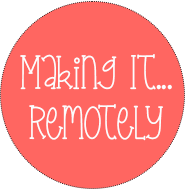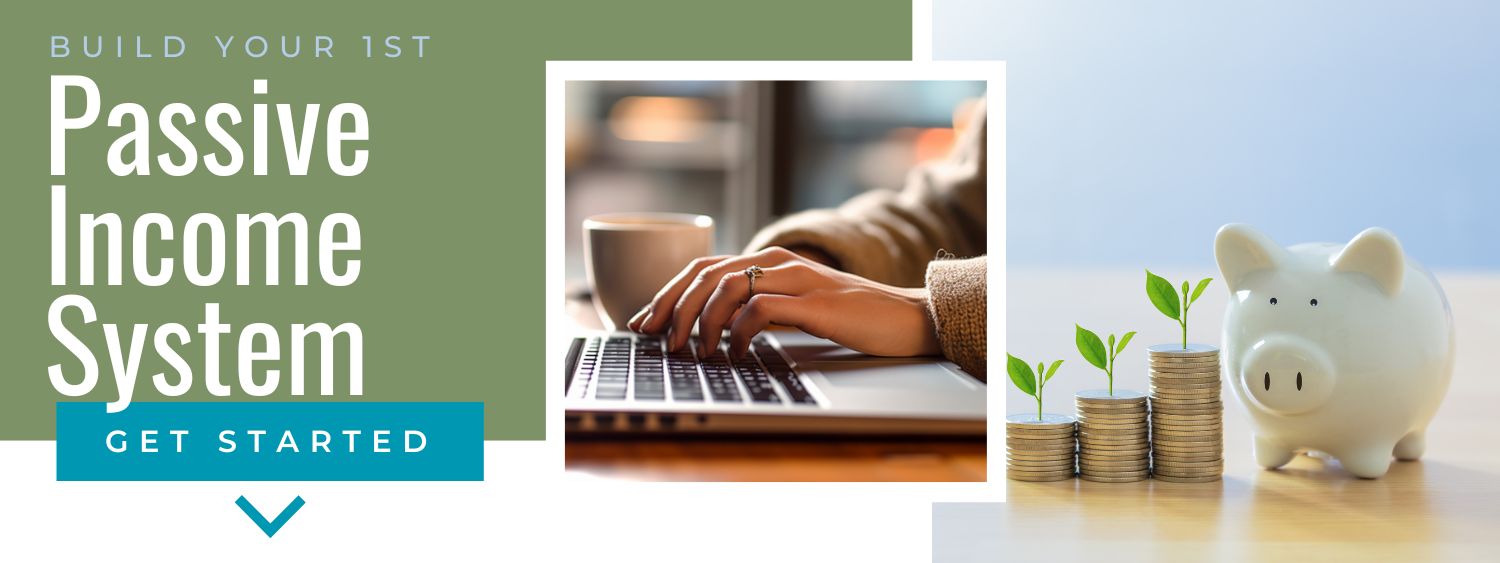Have you wondered about the difference between making money that trickles in versus money that flows? This post is about understanding passive income, along with active and residual income and how it can work to help you earn from many different sources at once.
When you understand these important terms, you'll be on your way to money that flows, earning from various income sources... while you do other things. Sweet, huh!
The difference between earning money that flows and money that trickles has a lot to do with how we've traditionally thought about earning money and how the internet changed the game, allowing more people to use it to increase their earnings.
This post will cover the differences between earning from active, passive and residual income, define what those terms mean and why they should be important to you.
The Difference Between You and Those Who Have "Cracked" the Money Code
Let's set the stage... you see people who seem to have "cracked" the money code and it looks so amazing, right? You know it's "possible" to earn online because you're earning "something". You're just not earning the kind of income that you can use to reach your dreams. You're not earning big weekly or monthly checks like those superstars you're seeing on social media or at your company meetings.
They make it look so easy as they walk across the stage and receive those massive checks. And when you see their results on income reports, the leader boards, and through other sources, you're baffled because you seem to be doing the same things that they're doing but you're not getting the same results. I totally get it.
This post will also break down the subtle differences between what you're doing and what those "other guys" are doing to get better results.
In addition to defining active, passive and residual income we are going to talk about the differences in thinking when it comes to how we earn money, and the pros and cons of each one.
For example, I would be willing to bet that those superstars walking across the stage are not doing things like chasing customers, hiring themselves out for low wage jobs, trading time for money or showing up at fairs selling their products from a table.
Now, if you're doing any of those things I just mentioned, I hope you're not offended... I'm not saying that there is anything wrong with any of these income methods.
As a matter of fact, that's how many successful entrepreneurs get their start.
What I am saying though, is that while these methods get you started, they are not the way to make money that flows into your bank account while you do other things.
At the end of this post, you'll find that understanding passive ways of earning and using the concept of residual income will make running and maintaining your online business more productive, a lot easier and even more profitable.
You'll have a better chance of getting to that place where more money is flowing in.
You'll understand how smart marketers (those superstars) have shifted their focus to earn less from active income, and more more from passive income methods and how it impacts their bottom line.
Not In a Reading Mood? Watch This Video...
Recommended books are: The Cashflow Quadrant by Robert Kiyosaki and A / B Testing: The Most Powerful Way to Turn Clicks Into Customers. Both of these books are a great read for entrepreneurs and anyone who wants to start earning passive income.
The Traditional Income Model
Let's start by going over the traditional way of earning, also called the active income model. With active income you earn by being present in a transaction where you perform a task and you get paid for it.
Subscribe to Our YouTube Channel
We're helping creative business owners go from stuck and confused to empowered and thriving, one video at a time.
Whether you're a business owner, salaried or you clock in to an employer, with active income you don't get paid unless you physically show up to perform the job. You receive a set payment for each time period or for each task you accomplish.
The active income model is the traditional model that people in my age group (the baby boomers) grew up with. We watched our parents and grandparents travel to a job to trade time for money with an employer.
As long as you, (as the employee) is able to contribute to the company and their bottom line, you can use the active income model to get paid for doing a job.*

One of the pros of the active model is that it provides a steady paycheck and benefits as long as the employee stays within the confines of company policies.
The problem with this model is that the U.S. economy has transitioned to stagnant wages and fewer employee benefits for many typical employees.
With the active model, the typical employee spends a lot of his or her life working to support the employer's goals with very little flexibility, while sacrificing their own goals, time with family and limited time off.
The pandemic has taught us that we (employees) are surviving at the will of of people whose decisions are primarily aimed at satisfying stockholders, maintaining their standard of living and maintaining the bottom line.
Let's face it, the employer controls the employment agreement and can hire, fire, give raises, reprimand, close or relocate at will.
People who have put all their eggs into this basket (so to speak), have ended up with very few options. And as we saw during the pandemic, many employees found themselves without a way to keep a roof over their heads.
In the active model, people are trained to do a task many times without knowing why they are doing what they do. The boss tells them what to do, and they have no idea how their job contributes to the bottom line.
Those who are able to translate the value they bring to the bottom line, usually do better with the traditional or active income model.
If an employee is not good at translating their value to the bottom line, if that job goes away, or they need to make a change, they have a hard time translating what they have accomplished in their current role to another role with another company.
For that reason, there are many people who are feeling that they are stuck in a never ending rat race.
Listen on the Go and Discover Active, Passive and Residual Income
The Passive Income Model
Now we'll focus on passive ways of earning. This model involves working smarter, not harder. And as we've learned during the great resignation that started around 2022, (the trend of elevated quitting), employees are starting to see that they need something different in their wages and work environment.
However, because most of us have learned to earn using the active model, the passive model takes a little getting used to. It can be a little scary making the switch to this income model.
However, once you understand how it works and how it can improve your ability to earn, you'll never want to go back to the traditional model. So let's get to it.
Passive income is earned when you provide something of value to the market, and you get paid for it without having to be physically present. Pretty sweet, huh?
For example, running a blog or online store is how lots of people are earning passive income. With these platforms and income models, income can be earned from royalties, commissions and product sales that happen 24 hours per day, seven days per week.
Those folks you see walking across the stage getting massive checks are doing so because of passive income. The folks who are killing it on the leader boards and income reports are doing so because of passive income.
They have adopted a new way of thinking that allows them to build multiple streams of income that brings in daily, weekly, or monthly income. Income that has changed their lives.
Believe it or not, superstars are being created every day. They have transitioned from being an everyday John Doe who was living off of a paycheck that was never enough.
They're people who no longer worry about bills or having more time and income to focus on the things and people that matter most.
They have become entrepreneurs who are free to live and not worry about a commute, clocking in or waiting for a $.25 cent raise.
With a blog, online store, or a YouTube channel, you can sell widgets made by you (or widgets made by someone else) to a worldwide audience, over and over again, creating income that flows versus the kind that trickles in.
If you're ready to shift your thinking away from the traditional or active income model to a passive model, you will improve your ability to earn money that flows vs. the kind that trickles.

What is Residual Income?
Residual income is another form of passive income that happens when earnings continue to be received after the completion of the income-producing work. For example you make the widget once and get paid for it over and over.
An example of residual income includes the way artists, musicians and authors work. They write the book, perform the music, or create the work of art one time.
And instead of getting paid once, they get paid (in the form of royalties) for the ongoing sale of their work again and again. Sometimes they are paid a hefty sums of money for years well into the future for one piece of work.
Other examples of residual income include earnings from rental property, interest and dividend income, and income from the ongoing sale (subscriptions and memberships) of consumer goods.
In affiliate marketing, there are many payment and commission structures. For example, some affiliate sponsors pay a one time commission (flat fee or percentage) when you send new customers their way. That means you get paid one time for each person you refer.
Getting paid once, without having to by physically present is considered passive income, it would not be considered residual income because the payments are not ongoing.
Other sponsors pay residual income or a regular monthly fee when you send someone to their website and the person makes a purchase. In this scenario your income grows with the number of people you send to a sponsor who end up making a purchase.
Some sponsors pay a lot for affiliate sales, others not so much.
On the positive side, this form of income can be really lucrative if you create or sell something that is popular.
A con is that it's not a guaranteed, steady paycheck, so there can be peaks and valleys. Another positive is that if the peaks are high enough, they may be enough to get you through the valleys. Additionally, you can find other products to supplement your income when you're in the valley.
Many affiliates balance out their income by finding sponsors that pay residual income versus one time payments.
In the music industry, if the hits keep coming, the artist's bank account will reap the benefits. If not, the artist may have to find something else to supplement their income during those lean cycles.
That's why you see a lot of artists, authors and writers invest their money for income, to handle lower income cycles.
Network marketing is another model that provides residual income to independent marketing reps. As a rep, you're paid regular monthly income and commissions for building a team and promoting other people's products.
On the negative side, you might starve if you're not able to produce something that people are buying. Have you ever heard the term "starving artist"?
Entrepreneurship is Not for Everyone

Unfortunately, not everyone will receive positive results. So, I might as well manage your expectations in this section.
The bottom line is, that if you decide to start an online business but you're not able to change how you think about earning, if you don't have a good work ethic and you waste time chasing shiny objects, you probably won't reach your income goals.
As stated earlier, most of us learned the traditional model... get a job and work it until we retire. Many of us weren't taught entrepreneurship in school.
So unless you're willing to learn new concepts like building a list, audience attraction and passive income, you'll never understand how to implement the habits and procedures needed to get ahead.
But if you're willing to learn and put in the time and effort, great things are possible. It's all up to you.
It All Comes Down to Systems
Remember those smart marketers, those superstars we talked about in the beginning of the article? Many successful marketers create systems that allow them to earn passive and residual income. And they do a lot less of those activities that fall under the category of active income.
Top earners have shifted their thinking to problem solving and adopting the traits of a boss. For example, they have taken courses, (like the one offered above) figured some things out on their own and/or they have hired people to create passive income systems. They test those systems to see what works best, and then they implement what works.
Common Misconceptions
Many people think that when they start a business, they will automatically start making money that flows. They don't realize that even though they are working for themselves, they may have taken the employee mindset into their business.
In most cases, it's not the business or the product that results in success, its the mindset and skills used by business owners and managers to make the business work to solve problems and provide quality service for their ideal customers.

Entrepreneurs who are trading time for money, have a little more freedom and flexibility. However, until they make a shift in habits and thinking, they are basically working a 9 to 5 job for themselves, in their business.
Yes they are no longer punching a clock, but they are still struggling to meet their income goals. They're not using leverage to build passive or residual income.
Are you doing what you see others doing from the outside looking in? It's hard to know what contributes to another person's successful work from home journey, without really understanding what goes on behind the scenes.
At the same time I would be willing to bet that the superstars you see in your company and around the internet sporting massive checks are not spending most of their time chasing active income.
An Example of Entrepreneurs Who Earn Both Active and Passive Income
Anyone with an online presence can earn both active and passive income. And in the same way you balance your financial portfolio, you should balance your income portfolio with a blend of active and passive income.
Once you are earning enough passive income to replace your active income (be sure to include the cost of benefits and a sizable reserve of savings), you are ready to
experience true financial freedom.
One example of how active and passive income can work together includes building an online store and working as a freelancer.
If you have a Fiverr freelancer profile and you are hired to perform a specific one time service for a client you are earning active income. The client pays you once you complete the job and you close the transaction once payment is processed.
You can at the same time you're working the freelance job, create and launch a video course on Fiverr, that can be taken at any time 24/7. Your course would be considered a digital product that allows you to earn passive income because you don't have to be physically present to teach the course. You create your video course and any digital course materials once, and people can purchase the course over and over.
If you're a maker and you sell physical products like crocheted pieces, knitted items, paintings, drawings etc., you are getting paid for each piece. This model could be a hybrid between active and passive income.
The act of selling in this case could be passive if it's done online in your store, but product shipment would be more of an active way to earn. In my opinion, this is more of an active way to earn, because if the customer does not get their item you won't be able to complete the sale.
If you sell digital products like online knitting and crochet courses and tutorials, affiliate products, schematics, or patterns that people can buy from you, you are using passive income. You can create these items once, and sell them again and again while you're creating your one of a kind paintings, drawings or other kinds of hand made items. See the difference?
Transitioning Away From Your 9 to 5 Job
Many successful entrepreneurs have started out working a 9 to 5 job, while they build their passive side hustle. Once the side hustle grows to a level that replaces their job, they quit and work from home full time.
Others live on their spouse's income to work from home and build a thriving online business. Then once the business grows to a level that replaces their spouse's income they retire their spouse. Again... pretty sweet.
Earning money that flows involves making the shift from thinking like an employee to thinking like a boss. It requires a lot more than performing tasks that you see others performing without understanding why they are doing it. It also requires the confidence to create, test and fail until you get it right.
Successful marketers have a way of making this all seem like a piece of cake, and it can be... but a lot goes on to get the typical six figure earner on that stage, or even surging ahead on their income statements and leader boards.
Take the first step in your passive income journey with the course below. Build your first income generating system that you can use to earn extra money, while you work at 9 to 5 job, manage a household or deal with other responsibilities. Click the button below to get started!
Build Your First Passive Income System
Build a simple, yet powerful system that attracts high-quality leads, nurtures customer relationships, and generates steady, passive income.


